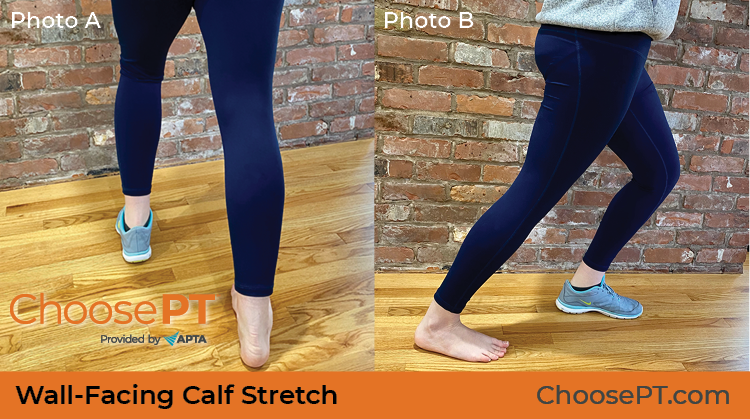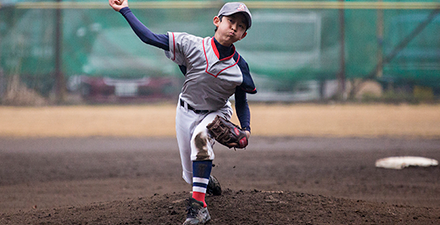Plantar fasciitis is a condition that causes heel pain. It can affect people of all ages and abilities, but is more common among runners and people who spend a lot of time on their feet.
Research shows that both strengthening and stretching exercise programs, including stretching the Achilles tendon, can greatly reduce pain and improve walking in people with plantar fasciitis.
If you’ve been diagnosed with plantar fasciitis or have heel pain, a physical therapist can design a treatment program for you. Treatment can include:
- Assessing how you walk and gait training.
- Instruction for when to apply ice for pain and inflammation.
- Temporary taping of your foot for short-term relief.
- Recommending shoe inserts, supportive footwear, or a night splint.
- Teaching you specific stretching and strengthening exercises.
Physical therapists are movement experts. They improve quality of life through hands-on care, patient education, and prescribed movement. You can contact a physical therapist directly for an evaluation. To find a physical therapist in your area, visit Find a PT.
Here are six exercises from physical therapists that you can try at home.
1. Plantar Fascia Massage
Note: You should not experience pain during this exercise. Apply enough pressure to feel a gentle stretch, but not pain.
- Sit in a chair or stand with one foot resting on a small ball or frozen water bottle. A frozen water bottle is useful as the ice helps reduce inflammation.
- Gently roll the ball or water bottle forward and backward under your foot. Start at just below the ball of your foot and end just before your heel.
- Roll the ball or bottle back and forth slowly 10 times for each foot. Do two sets per foot.
- Do this exercise once daily.
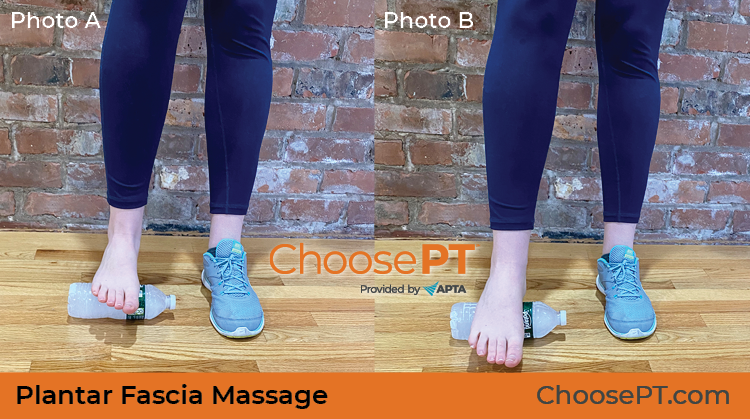
2. Heel Raise
Note: This exercise should be done slowly and with controlled movements. Make sure to maintain your balance and hold on to a railing or other support if needed.
- Stand with the balls of your feet at the edge of a bottom step.
- With your heels hanging off the edge, slowly and gently lower your heels just below the edge of the step. You may feel a stretch in your calf muscle.
- Slowly rise onto the balls of your feet.
- Repeat this 10 times, then rest. Complete two sets of this exercise.
- Do this exercise once daily.
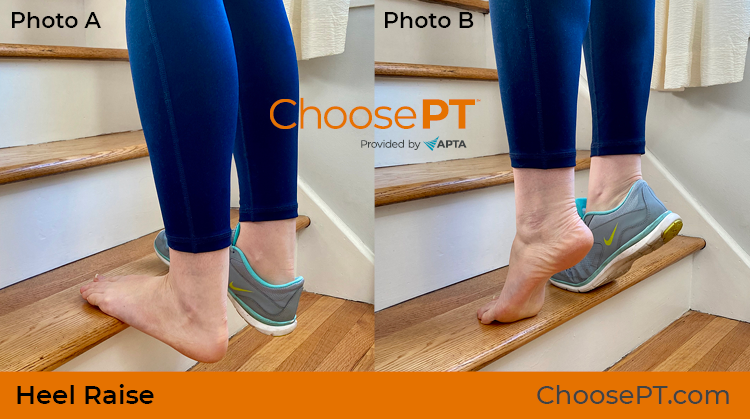
3. Floor Sitting Ankle Inversion With Resistance
Note: This exercise requires an elastic exercise band.
- Sit upright on the floor with your legs straight out in front of you. Make sure to avoid any hip movement while doing this exercise.
- Place your left leg over your right leg with a resistance band secured around your upper foot and looped around the bottom of your lower foot. Hold the end of the band in your hand.
- Slowly move your upper foot (the one with the resistance band around it) away from the lower foot. To do this, rotate your ankle inward and slowly return it to the starting position.
- Repeat 10 times and complete two sets per foot.
- Do this exercise once daily.
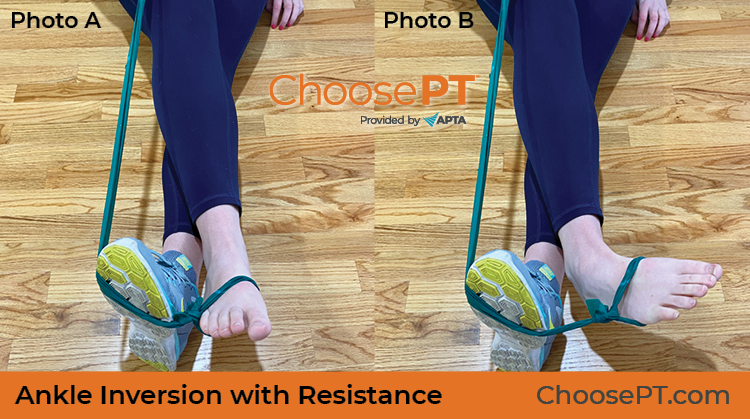
4. Standing or Seated Toe Towel Scrunches
Note: Make sure that your whole foot stays on the ground and that only your toes do the work of this exercise.
- Stand or sit upright in a chair with one foot resting on a towel and spread your toes.
- Curl your toes to scrunch and draw the towel toward you 10 to 15 times. Do two sets of 10 to 15 scrunches per foot.
- As you get stronger and this exercise gets easier, place a small weight (2 to 4 pounds) on the far end of the towel to make the exercise harder.
- Do this exercise one to three times daily.
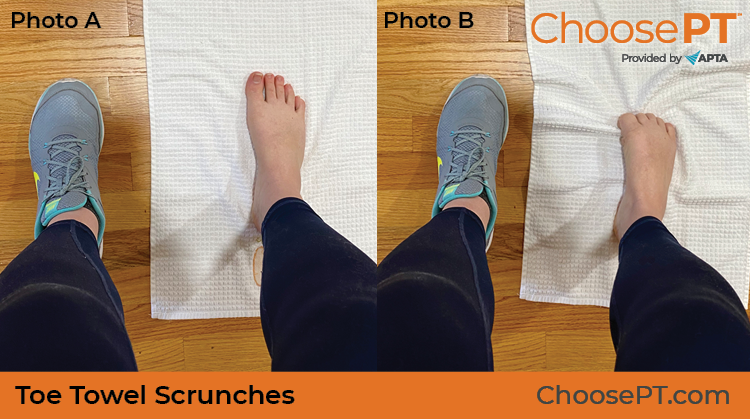
5. Seated Plantar Fascia Stretch
Note: Complete this stretch in a slow and controlled manner.
- Sit in a chair and cross one leg over the other knee, so your ankle is on top of your other leg.
- With one hand holding your ankle and the other holding your toes, gently pull your toes backward until you feel a stretch in the bottom of your foot.
- Hold this position for 20 seconds and repeat three times for both feet.
- Do this exercise once daily.
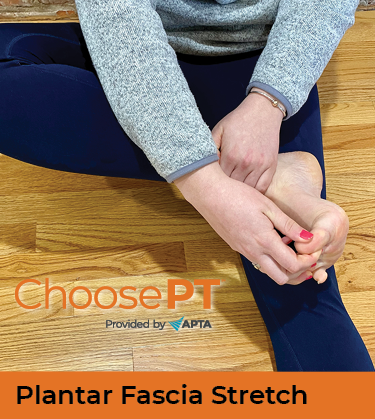
6. Wall-Facing Calf Stretch
- Stand upright facing a wall at arm’s length and place your hands flat on the wall.
- Keeping both feet flat on the floor, extend one leg straight backward, bending your front leg until you feel a stretch in the calf of your back leg.
- Hold for 20 seconds and repeat three times for both legs.
- Do this exercise once daily.
